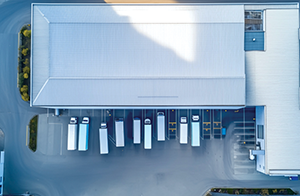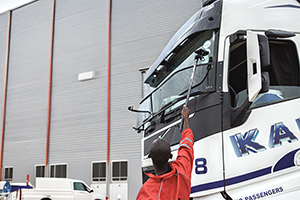

South Africa’s logistics sector is under constant pressure, not only from external threats like hijackings and cargo theft, but also from internal vulnerabilities, operational blind spots, and limited support. While advanced technologies exist across the value chain, physical security gaps remain most visible where people and goods intersect – at the gate, the warehouse floor, and during handovers. Effective logistics security, clearly, in real time and backed by data, is central to building resilience in an unpredictable environment.
Inside the warehouse
Monitoring stock is only part of the challenge. The bigger risk often lies in how stock is handled, by whom, and whether those individuals are meant to be there in the first place.
Everything entering and leaving a warehouse, including personnel, visitors, vehicles, and goods, must be logged, time-stamped, and verified. Digital input logs, photographic records, and asset movement data provide operational clarity and historical accountability. Irregularities can trigger alerts, while built-in prompts for random searches introduce an additional layer of deterrence and compliance. These measures reduce substitution, mislabelling, and unauthorised tampering, particularly with high-value or easily resold goods.
Loading bays
Loading and unloading zones are often chaotic, fast-moving environments where syndicates and opportunists thrive on confusion. Here, clarity and control are non-negotiable.

Pre-booking systems allow logistics operations to register drivers, trucks, trailers, loads, and even specific bay allocations in advance. Verifying that the right truck arrives at the right time and confirming that it matches approved credentials limits unauthorised access and prevents ‘swapped’ vehicles from collecting goods they should not. Knowing which bays are occupied, which are overdue, and what is scheduled reduces risk and improves efficiency across the board.
In transit
Goods in transit remain one of the most vulnerable stages of the logistics process. While vehicle tracking is widespread, a gap remains in how companies respond to delays or deviations in real-time, especially when armed hijackings or insider collusion are involved.
By logging departures and expected arrivals, systems can flag trips that exceed standard duration thresholds. If a vehicle remains offsite longer than anticipated, alerts are sent to designated personnel for immediate follow-up. This approach does not intrude on drivers, but still offers a mechanism for an early response when something deviates from the plan, such as at truck stops, refuelling points, or during long-haul stretches.
Cash-in-transit and beyond
Cash-in-transit operations face a level of threat that goes beyond most logistics contexts, with lives, not just cargo, at stake. While armed response and vehicle hardening are critical, perimeter control at the site of collection or delivery remains a weak point.
Digitally verifying the personnel and vehicles involved in these operations reduces human error, impersonation, and undocumented handovers. Entry and exit records ensure there is a verifiable audit trail of who accessed which zone, when, and for how long. These controls support investigations and enhance trust between logistics operators and their clients.
Insider threats: patterns, not just people
Not all threats come from outside. The ability to identify unusual patterns, such as an employee accessing multiple sites outside their scheduled shift, or a visitor repeatedly staying longer than expected, is crucial in detecting risks before they materialise.
Access control data, reviewed alongside time on site, frequency of visits, and historical incidents, can help flag suspicious behaviour. Integrating this data across multiple sites gives operators a much broader view of internal vulnerabilities, something spreadsheets and paper logs cannot deliver.
Intelligence and cybersecurity
Security teams are often limited by the information they do not have. Real-time dashboards that capture personnel flow, high-traffic windows, incident timing, and bay congestion offer critical intelligence for decision-making. Whether it is allocating guards more effectively or identifying peak-risk days, data becomes a strategic asset.
In today’s environment, securing that data is just as important. From routes and delivery schedules to personnel files and contractor records, digital access systems must be built with cybersecurity and compliance in mind. POPIA compliance, encryption, and cloud-based backups are no longer nice-to-haves; they are baseline requirements for any logistics security system.
Access control is no longer just about opening and closing a gate; it is about ensuring security and safety. It is about knowing who is on-site, why they are there, and whether their presence aligns with your operational and security protocols. When done right, it creates structure in places where disorder is often the norm.
Security in logistics is not solved by any one technology, but when visibility, verification, and data come together at the most vulnerable points of the operation, the risks become easier to manage and harder to exploit.
ATG Digital supports logistics operators with digital access control and identity management systems that provide site-wide visibility, expedite gate processes, and maintain accurate, audit-ready records.
| Tel: | +27 10 500 8611 |
| Email: | [email protected] |
| www: | |
| Articles: | More information and articles about ATG Digital |

© Technews Publishing (Pty) Ltd. | All Rights Reserved.